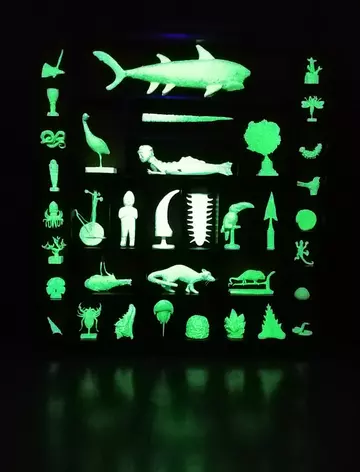
Dr Heidi Ma
Postdoctoral Research Assistant
The third post in the four-part series 'Creativity Unlocked: Exploring the art in the science', by Heidi Ma, sharing her favourite exhibitions conveying environmental and conservation messages.
Today, art about environmentalism increasingly constitutes our visual culture. Contemporary artists across the world are increasingly engaging actively with pressing environmental issues. Using public art as a form of protest, artists have made strong statements about climate change, wildlife extinction, overconsumption, and pollution, raising much-needed awareness with bold visual impact.

What is 'Environmental' Art?
Environmental art has its roots in the 1960s, when artists sought to engage with the natural environment and the place of people and art within it and began to use art to convey political messages about the environmentalism movement. Pioneering environmental artists like Robert Smithson, Nancy Holt, and Andy Goldsworthy use natural materials such as leaves, soil, water, stone to create ephemeral earth-based artwork that disintegrates with natural processes.
Contemporary artists use diverse tools to push the conceptual boundaries of what is art and what art can express, challenging viewers to engage with current issues. Artists such as Olafur Eliasson, John Akomfrah, and Cai Guoqiang respond to environmental crisis in the Anthropocene using diverse media aerial photography, sculpture, and performance. Like scientists, artists are making use of rapidly developing technology in creative ways.
London’s incredible art scene has offered me endless inspiration, especially when art intersects with science. Last year, one of the premier art events in town, the Royal Academy’s Summer Exhibition, featured artists anxieties about the destruction of the natural environment. Among some of my favorite exhibitions is Mark Dion’s Theatre of the Natural World at Whitechapel Gallery, which offered both humorous and serious commentary on the study of natural history, species extinction, birdwatching, sport hunting, and many more phenomena that span multiple natural and social science disciplines. Hayward Gallery’s recent exhibition Among the Trees offered a meditative experience contemplating the human relationship with this ubiquitous yet fascinating form of life that underpins ecosystem functioning and regulates climates.

The power of public art
Public art is a powerful way to engage people from all walks of life and make contemporary art more accessible (think London’s iconic landmarks or unremarkable street corners instead of gallery opening nights and private views). One piece that left me a strong impression was John Gerrard’s Western Flag (Spindletop, Texas), a video installation in Somerset House’s courtyard. A large screen showed a digitally simulated image of dark smoke making the shape of the American flag, symbolising the oil fields of Texas and the modern world’s dependency on fossil fuels. Beijing’s apocalyptic air pollution has been brought to wider attention when smog was sucked up in a vacuum and made into a brick, and similar to citizen scientists, local residents took to photography to document the worsening air quality in Beijing.
Arguably, art is a medium that transcends language and cultural barriers, and can reach different, if not more diverse audiences, than scientists. It is indeed exciting to see that artists have been drawn to urgent environmental issues and interpreting scientific findings to communicate with the public.
Perhaps science can also learn from the arts and seek more creative ways to convey our most important messages, because science, especially conservation, is also value-laden, political, and has an urgency to communicate the unprecedented environmental crises that our generation is facing.
In the final blog of this series published next Friday, I will share my own tips on helping you get started doing some nature and zoology-inspired art.
